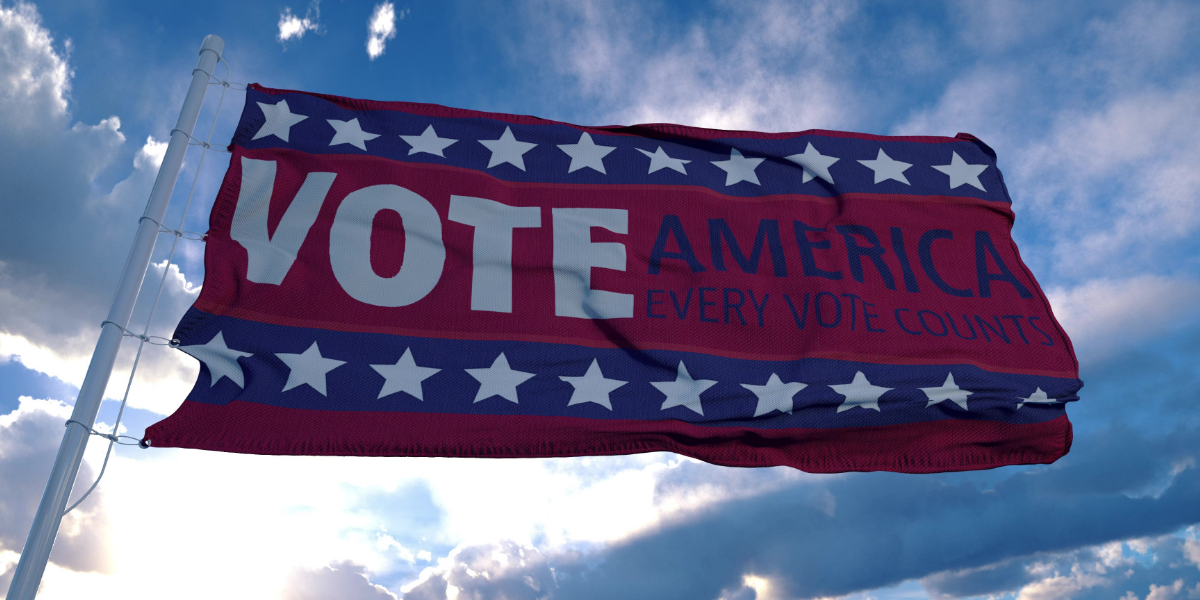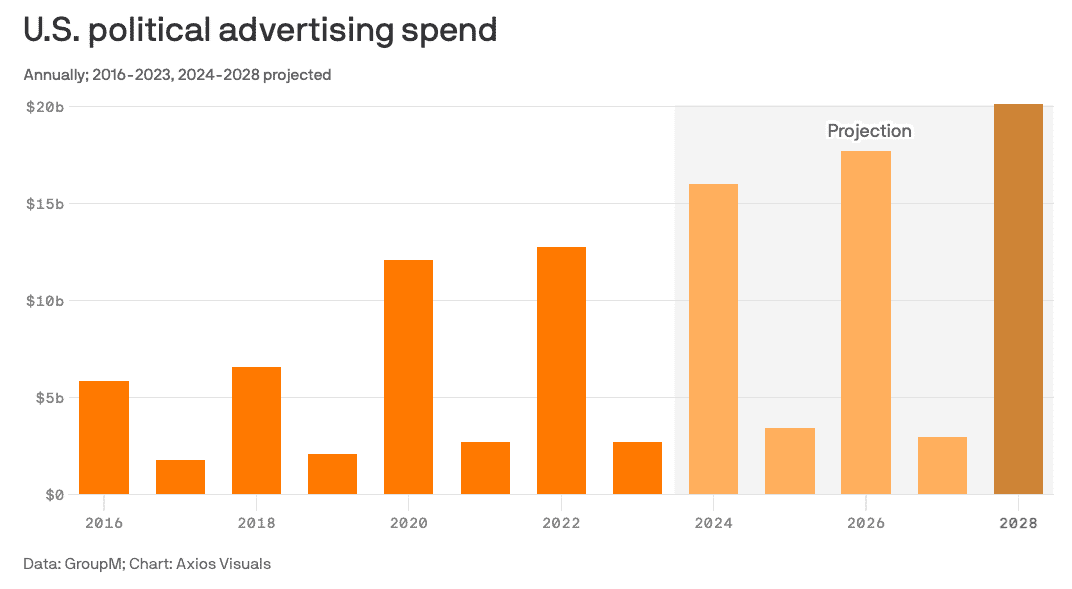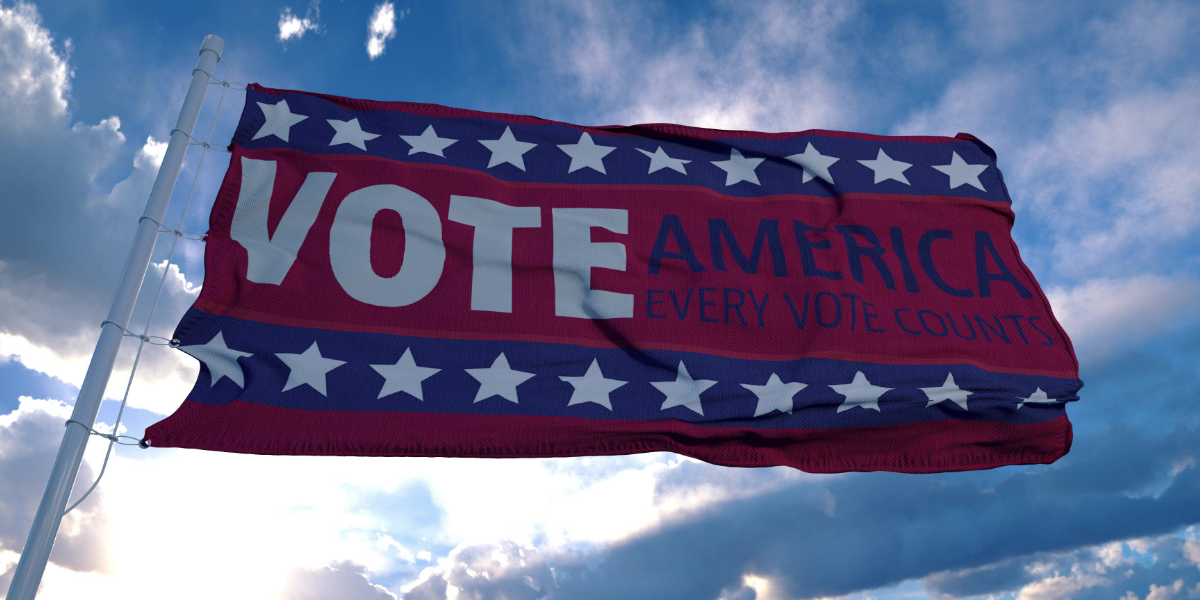How to Choose the Right Marketing Agency
You know you need marketing help, but with so many options, choosing the right marketing agency for your business can seem daunting.

Regardless of your political stance, if you work in marketing, you know that advertising during an election year is a different beast altogether.
This year's presidential election is not only the longest on record but is expected to flood the U.S. ad market with more than $17 billion, making the advertising landscape significantly more complex for everyone.
What's more, this year's spending is not an outlier but rather another data point on an upward slope as each election cycle breaks new spending records.

And while a large portion of political ad spending goes to traditional mass media channels like TV and radio, attention has been directed increasingly to digital and social marketing since 2008.
This influx of spending increases the competition for ad space and drives up the cost of reaching your audience.
Not to mention that the behaviors of that audience tend to shift unpredictably along with the news cycle during an election campaign.
In this post, we'll explore the unique challenges and opportunities of election year advertising and provide actionable strategies to help you navigate this turbulent period effectively.

During an election season, the competition for ad space intensifies significantly across all media channels.
Political campaigns flood traditional advertising platforms such as television, radio, and print.
This surge in ad spending often leads to a bidding war for prime advertising slots, driving up costs and squeezing out small-to-medium-sized brands who may have previously relied on these channels for visibility.
Navigating this heightened competition requires open-mindedness to strategically reassess where and how to allocate your advertising budget.
You may find the need to move towards more creative and adaptable strategies, such as increasing your investment in digital and non-traditional media channels that offer greater flexibility and potentially lower cost per impression.
The increased competition for ad space underscores the importance of precise targeting and strategic timing in your media buy.
Brands must leverage data-driven insights to pinpoint moments when their audience is most receptive, avoiding peak political ad periods that could dilute their messaging effectiveness.
Election seasons and political polarization affect consumer sentiment and behavior.
The mindset of your audience may be influenced by the heightened political climate and pervasive media coverage.
Not to sound cynical, but many politicians campaign by telling you how bad things are. Once you hear that a few dozen times, it's human nature to focus on your own worries about personal finances, job security, family values, the future, etc. These are all played upon and heightened in the media for political purposes.
This often translates into altered consumer behaviors that marketers must navigate strategically. For example, someone worried about inflation or the economy may significantly reduce their spending.
One noticeable effect of political seasons is the polarization of consumer sentiment.
Political issues and candidates can evoke strong emotions and opinions, influencing consumer attitudes toward brands associated with certain political stances or affiliations.
In an election year, consumers tend to become more attuned to brand values and social responsibility, making them more likely to scrutinize a brand's actions and statements.
In fact, the sheer volume of political messaging during election seasons can lead to information overload for consumers. As they navigate through a barrage of political ads, debates, hot takes, and news coverage, consumer attention spans may shorten, making it challenging for brands to capture and maintain engagement.
All of this underscores the importance of keeping a finger on the pulse of your own audience and crafting messages that resonate authentically with their consumer value.

Managing an intense political landscape doesn't mean throwing your entire marketing plan away, but there are some key areas in which you'll want to focus.
Maintaining flexibility in your media budget will allow you to respond to market changes quickly.
In previous election years, our clients often found that reallocating funds to social media ads provided a more cost-effective way to maintain visibility without breaking the bank.
As more and more political ad dollars are spent on social channels, consider exploring new or untested opportunities to reach your audience.
Identifying optimal times to run ads can help avoid peak political ad periods. This strategy is one of the reasons that social media was a successful advertising channel during past elections, as it allowed us to hyper-target our core audience while avoiding getting caught up in a political frenzy.
Knowing when to advertise or, more often, when not to advertise is crucial. For example, during a Presidential debate, people tend to have extreme feelings, and it may not be the most opportune time to hear about your product or service.
Articles and content online can be politically charged and polarizing, especially during an election year. Brands must be vigilant in making sure their ads do not run next to inappropriate or damaging content.
If your brand does enter the story somehow (hopefully in a positive way, but also if it's negative), you'll want to be able to react quickly.
If possible, avoid association with controversial political content and monitor ad placements to ensure brand safety.
Maintaining a positive brand image is crucial, especially when political tensions are high.
While you'll want to avoid political controversy and maintain neutrality, it is still possible to create relevant messaging by focusing on your brand values and the problem your product or service solves.
If political news is making your audience nervous about the economy, consider messaging that shows how you help your customers without taking a political side.
This year, Chili's even created a video game in which rising fast food prices are the villain.

Ideally, you want to develop messaging that will resonate with your target audience without alienating specific segments of your customer base.
Having well-defined KPIs enables marketers to adapt their strategies during an election year.
By keeping a close eye on key metrics such as reach, engagement rates, conversion rates, and cost-per-acquisition (CPA), marketers can identify trends, optimize campaigns, and allocate resources effectively.
For instance, if your cost per conversion is becoming too high in a channel that typically works well for you, don't be hesitant to make adjustments.
Most importantly, leverage historical data and industry benchmarks from the previous election cycle to set realistic benchmarks for your KPIs.
Conduct a thorough analysis of your ad performance after the campaign too. Gather insights to refine your strategies for future election cycles. Learning from each election year can provide valuable lessons for your brand.
Running ads during an election year can be daunting, but with the right approach, it can also be a time of great opportunity. Understanding the landscape and adapting your strategies accordingly allows you to navigate the complexities and come out ahead.
Sign up for our monthly newsletter to receive updates.

You know you need marketing help, but with so many options, choosing the right marketing agency for your business can seem daunting.

The amount a business should set aside for its marketing budget will vary based on its position in the market, its business goals, and the...

Have you ever been part of a rebranding project and had a board member or senior leader say, "That's not who we are."